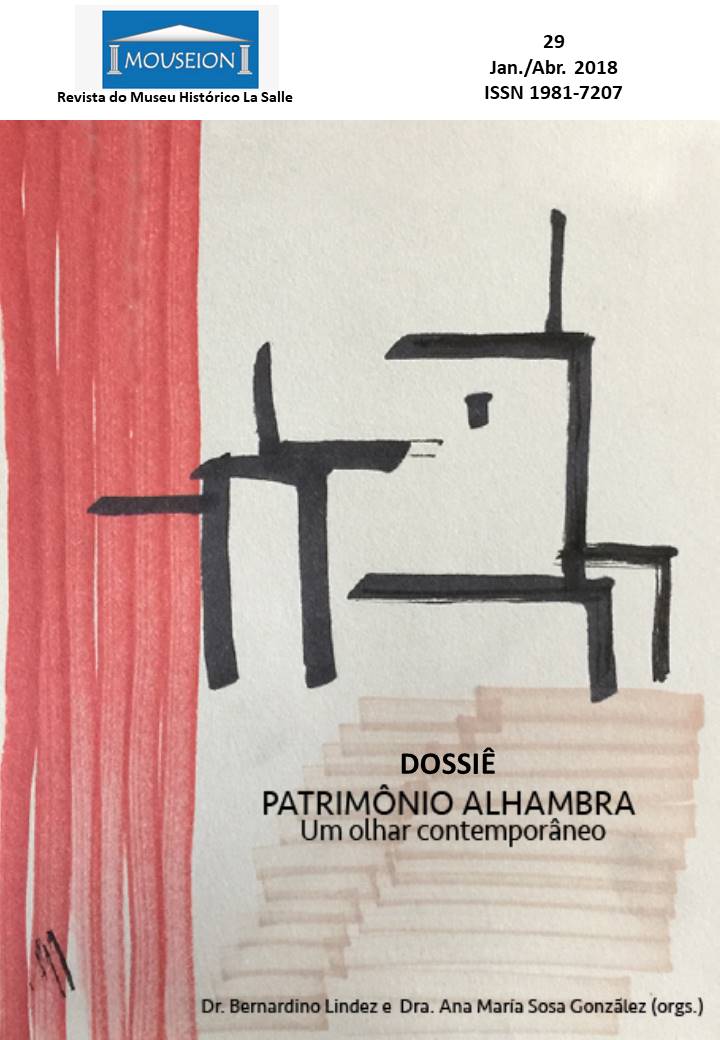The Alhambra in the work of Rogelio Salmona: echoes of the Nasrid experience
DOI:
https://doi.org/10.18316/mouseion.v0i29.4677Keywords:
Architecture, Alhambra, Rogelio Salmona, Voyage of the Architect, 20th CenturyAbstract
The influence of the Alhambra upon contemporary architecture is recognized worldwide, hence the Latin-American case is not an exception. This architectonic relation, attractive and full of creative strength, is especially evocative in the works of Rogelio Salmona who, among other architects like the Mexican Luis Barragan, applied Hispanic-Islamic principles to his works. This investigation does not propose a map of influences or a compilation of past research, but an approach based on Salmona’s own travels and living experiences. Its first step is a general description of the Alhambra influence on occidental architecture between XV and XX centuries. This is followed by an explanation of the essential typological principles in Islamic architecture. After that, we present a record of Salmona’s travel through Spain, which shows how the Alhambra became its main protagonist, and concludes with a tracking of what composition strategies inspired on the Alhambra were applied by Rogelio Salmona. This paper uses Salmona’s own photographic work as a key for discovering the emotivity of his projects, in a way that shows a clear connection between architectures apparently separated in space and time.
Downloads
Published
Issue
Section
License
Authors must submit their manuscripts to be published in this journal agree with the following terms:
Authors maintain the copy rights and concede to the journal the right of first publication, with the paper simultaneously licensed under the License Creative Commons attribution that permits the sharing of the paper with recognition of authorship and initial publication in this journal.
Since the articles are presented in this journal of public access, they are of free use, with their own attributions for educational and non-commercial purposes.


